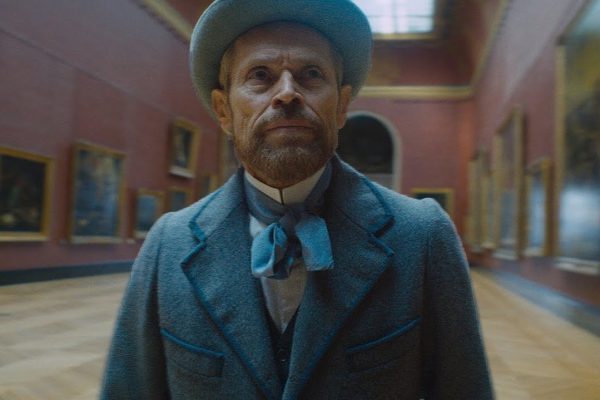@Filmhouse, Edinburgh from Fri 29 Mar 2019
Artist and filmmaker Julian Schnabel (The Diving Bell and the Butterfly) returns to the painterly biopic that first made his name as a director. His debut Basquiat was about his contemporary, the cult street artist Jean-Michael Basquiat. In his latest, he turns his attention to possibly the most iconic of them all, Vincent van Gogh (Willem Dafoe). At Eternity’s Gate sketches the final years of the great painter in elliptical vignettes, from his meeting with Paul Gauguin (Oscar Isaac) to his last frantic gout of prolific creativity in Auvers-sur-Oise and his death by gunshot wound. It’s cluttered, chaotic and mercurial as its subject. As such, it’s an impassioned and largely successful attempt to emulate van Gogh’s style through film.
Schnabel uses various methods to pull us into the mind of his subject and make us feel the impact of his work. The camera of Benoît Delhomme is in a constant state of anxious flux. It circles van Gogh like a boxer, calculating whether to rush in or pull away. It often drops its focus to the ground in front of van Gogh’s feet. It gives the impression of compulsive motion, but with no clear destination. When van Gogh interacts with people, they’re presented at a slight tilt, with (aptly) Dutch angles galore. Snatches of dialogue from earlier scenes are replayed later, suggesting the words rattling through his head. It’s true that these are all variances on a repetitive narrative point, the prodding of Vincent’s precarious mental state, but its a suitably impressionistic approach that works beautifully, and merely augments phenomenal work from its star.
Dafoe is substantially older than van Gogh was in his final years, yet his gaunt, weathered and haunted face fits perfectly. It’s an internalised performance that is most eloquent in its moments of silence, filled with rapture and agony. Van Gogh is the quintessential tortured artist and it would be easy to play it as such, but Dafoe’s artist orbits insanity rather than plunges into its stormy eye. Although wonderful, it’s a surprising nomination for the best actor Oscar; something of an outlier among the other lionised performances. It feels like the token jazz album in the Mercury Prize shortlist; the same recognisable instrument yet played in a different key.
At Eternity’s Gate makes few concessions to the mainstream and when it tries they invariably lead to its weaker moments. There is the occasional reliance on recognisable iconographies, such as the bandaged van Gogh lifted directly from a self-portrait. Gauguin talks of his desire to head off to tropical climes. The story is littered with recognisable faces from famous paintings. It’s not that these nods to accessibility cheapen the film at all, it’s merely that the film is otherwise thoroughly committed to its abstract approach.
It’s no surprise that Schnabel is an artist himself, with an obvious love for his subject. For all the techniques he uses to draw us into the world of his subject he never forgets the power of the art itself. The single most evocative moment is a simple cut from black and white to colour as the camera focusses on one of Vincent’s landscapes. At that moment we get a sudden sense of the intensity, the visceral impact and the shock of the new these works still have the capbility to provoke.
